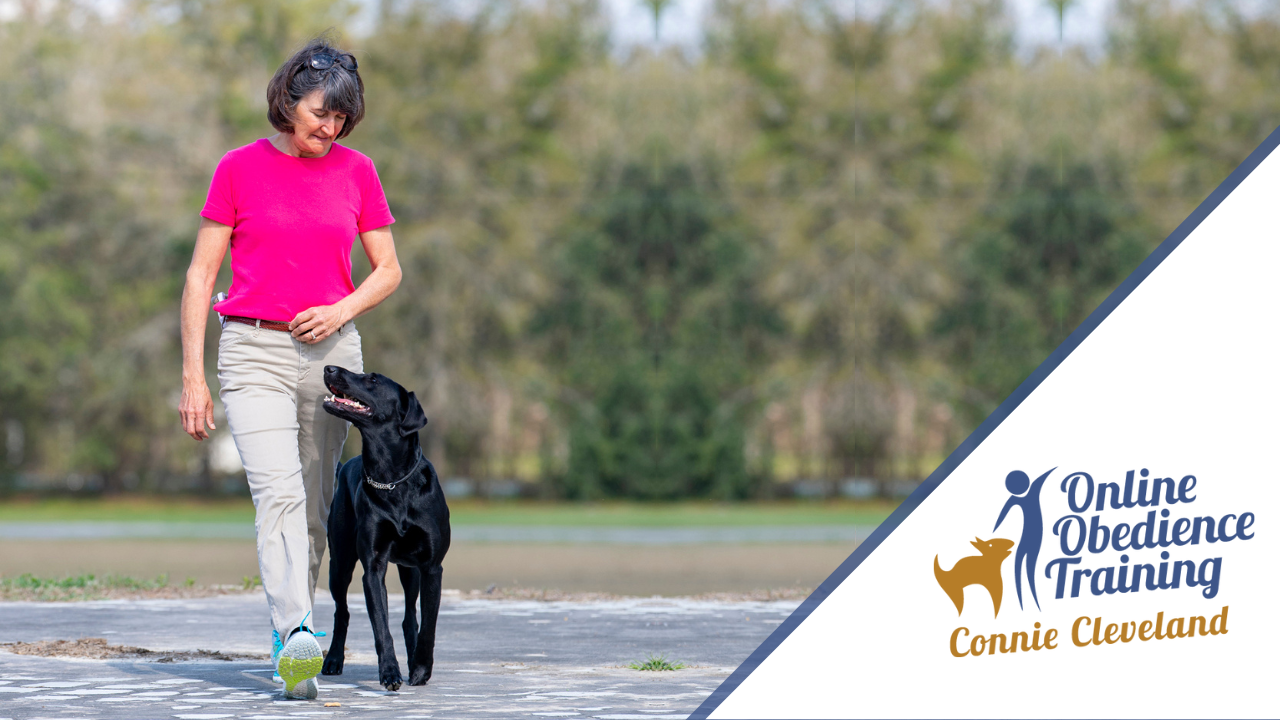Heeling with Attention
Dec 01, 2022
It is clear that teaching a dog to pay attention while heeling remains the most frustrating aspect of obedience competition. A dog that doesn’t pay attention is unable to maintain an accurate heel position and achieve the heeling scores of his attention-paying counterparts.
How do you get your dog’s attention, and more importantly, how do you maintain it?
Let's consider these stages of development:
- Initiate the Behavior
- Reward the Behavior
- Require the Behavior
Initiate the Behavior
Begin teaching your dog to heel by luring (bribing) the dog to pay attention with food or a toy. This is an important first step. Just as you were able to lure your dog into a sit or down position, a lure can convince your dog that he is capable of walking and looking at you at the same time.
Some dogs are not motivated to look up, no matter what the lure. If luring will not illicit the behavior you desire, don’t change your goal, change your technique! Try walking backwards and lure your dog to walk toward you. Walking toward you is often easier that walking beside you. One of the ways dogs learn is by being physically guided into the correct position. Consider using your left hand to lift your dog’s head while you walk side by side. Perhaps putting a head halter on the your dog will enable you to physically lift his head up and show him what you want.
Be aware that when you are luring, your dog will believe that he is being rewarded for chasing food. From his point of view, chasing food (toy) is the behavior that immediately precedes the delivery of the treat or toy. As soon as possible, your toy or treat needs to stop being a lure and become the reward.
Reward the Behavior
Hold your lure out of reach or out of sight and use your voice to praise your dog when he is looking at you. Stop praising when he looks away. Using a "carry-on" marker (good!) or a reward marker (Clicker or "yes") you can effectively communicate that it is the behavior of walking and looking that predicts the marker and the subsequent delivery of the reward.
Watch the following video. Thad and Nick are both learning that by walking and paying attention, they can make reward happen.
Require the Behavior
When your dog understands that he can make reward happen by paying attention, it is time to teach him that something unpleasant will occur if he fails to pay attention. Just as he controls reward, he can control an unpleasant consequence. In the following video, Thad and Nick learn that the consequence for inattentiveness is a quick tug on the collar. Additionally, they learn to;
1. Stop the correction by looking at the handler, and
2. Prevent the correction by refusing to become distracted.
Your dog can learn to control whether or not you tug his leash.
Consider these steps:
Step 1: In Front
Begin with your dog sitting in front of you. Praise him when he looks at you. If he looks away, give a tug on the leash. If he looks back, praise him and reward him because he has just stopped the correction. Don’t stop there; you also want evidence that your dog knows how to prevent the correction. This will be evident when it is clear that he has heard something or is distracted by a toy or touch but refuses to look away.
Step 2: In Heel Position
If your dog successfully can stop and prevent the correction when he is sitting in front of you, move to heel position. Continue with the same drill. Your dog should look up any time you give a quick tug on the leash, but more importantly, he should refuse to look away with distraction because he knows he can prevent that annoying tug from happening again.
Step 3: Moving in Heel Position
Finally, start walking with your dog in heel position. When he looks away, give a quick tug up on the leash. If you have done your job, he will understand how to make you stop by immediately looking back at you. When he does, use your carry-on or reward marker and reward him!
Initiate, Reward, and Require...it’s simple, and it works!
I hope you found this helpful. This content is a sample of the information about heeling that is available on the Obedience Road Membership. The membership is a complete online library, full of written text and videos to help you meet all your obedience goals.
My goal is to ensure you have a great time training and competing with your obedience dog. The Obedience Road members have allowed me to do that through-
- Monthly webinars
- Weekly training tips
- Weekend show support, and
- Personalized feedback
Whether you’re getting started with a new puppy or pursuing an Obedience Trial Championship, I want to help. The Obedience Road membership program is now OPEN for enrollment.
~ Connie
Did you enjoy the article?
Sign up to receive more free training TIPS & TRICKS from Connie.


